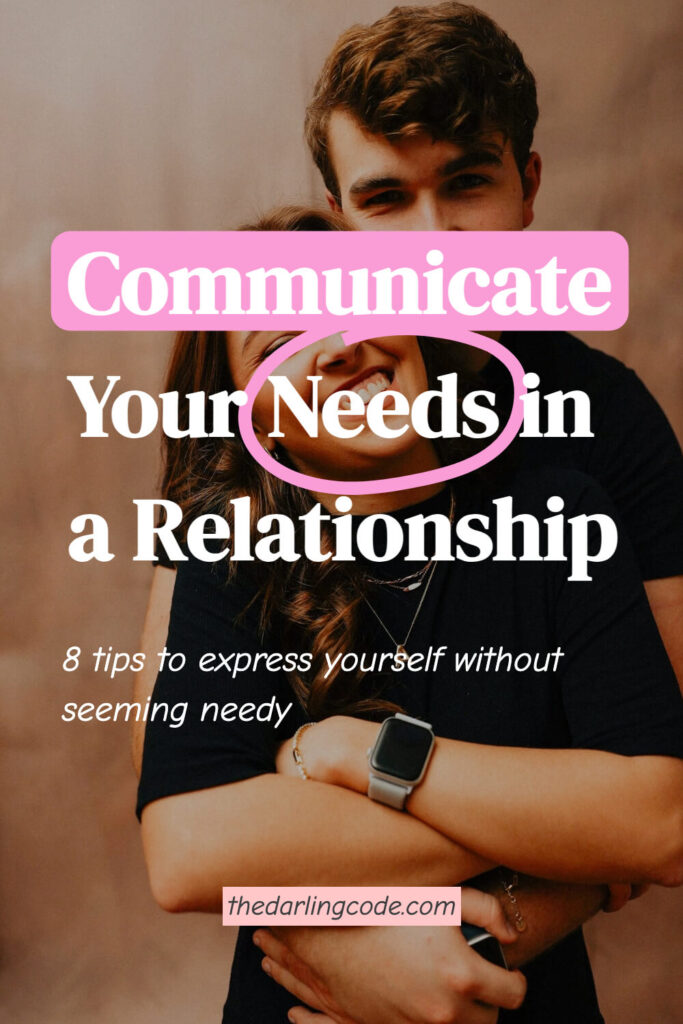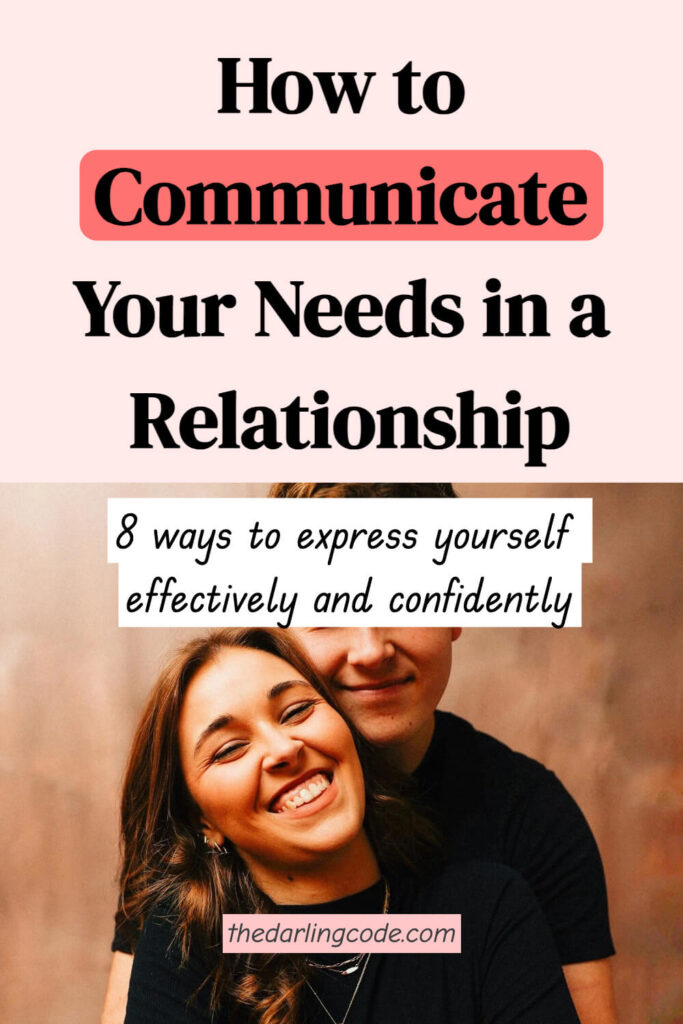How to Communicate Your Needs Without Feeling Needy
The experiences shared in this article are based on real emotional journeys, but all personal details are anonymized and used with the explicit written permission of the clients. Any resemblance to actual persons, living or dead, is purely coincidental. We are committed to treating all client stories with the utmost confidentiality and respect.
The Library Whisper
On a quiet Thursday afternoon, I found myself tucked into a corner of the local library, pretending to read while secretly observing a couple studying together.
The woman tapped her partner’s notebook gently, her voice soft as the pages around them: “I’m getting overwhelmed. Could we take a walk and talk through my essay topic?”
He closed his laptop immediately, reached for her hand, and whispered, “Always. The trees out back are practically begging us to visit.”
No eye rolls. No sigh of obligation.
Just two people weaving their needs into the fabric of their day like it was the most natural thing in the world.
Many of us struggle to voice our desires without feeling like we’re demanding too much.
We tiptoe around our needs, burying them under jokes or silence until they erupt in ways we regret.
But here’s the gentle truth: Expressing needs isn’t selfish—it’s how love stays alive.
Let’s explore how to ask for what you deserve, not as a plea, but as an invitation to grow closer.
Save this article for later—Pin it to Pinterest and come back when you need it! 📌

1. Rewire Your “Need” Narrative
Meet Clara: For years, she bottled up her desire for weekly date nights, fearing she’d sound “clingy.”
Then one rainy evening, she blurted out, “I miss how we used to laugh over bad pizza. Could we try that again?”
To her surprise, her partner lit up: “I’ve missed that too. Let’s order the cheesiest one tonight.”
What this teaches us:
– Needs are bridges, not burdens
– Specificity disarms defensiveness (“I’d love to try that new bookstore Saturday” vs. “You never plan dates!”)
– Framing desires as shared experiences creates connection
Try this gentle shift:
Instead of: “You’re always on your phone!”
Try: “I’d love to hear about your day without screens. Let’s watch the sunset together?”
2. The Art of the “Soft Ask”
Imagine your needs as seeds—plant them with care, and they’ll grow naturally.
How to phrase it:
– “I’ve been craving…” (less confrontational than “I need”)
– “Would you be open to…?” (invites collaboration)
– “What if we tried…?” (positions it as an experiment)
Real-life example:
When my client Jamie wanted more affection, she told her partner: “I’ve been craving more hugs lately—it helps me feel grounded. Would you be open to a quick squeeze when I get home from work?”
He started leaving sticky notes saying “Hug Station →” with arrows pointing to himself.
3. Timing Is Your Secret Ally
Even the kindest ask can feel heavy if delivered at the wrong moment.
Green-light times:
– During shared calm (Sunday morning coffee rituals)
– After moments of connection (post-laugh, post-cuddle)
– When their “love tank” is full (right after they’ve received appreciation)
Red-light times:
– During their work deadlines
– When either of you is hungry/tired (HALT: Hungry, Angry, Lonely, Tired)
– In public spaces where pride might flare
Pro tip: Use the “Sandwich Method” for tough conversations:
– Appreciation: “I love how you’ve been handling the kids’ bedtime.”
– Ask: “I’d feel more supported if we could split mornings too.”
– Affirmation: “I know we’ll figure this out together.”
4. Embrace the “Two-Sentence Rule”
Overexplaining dilutes your message.
Keep requests clear and concise:
Feeling: “I’ve been feeling lonely during your gaming nights.”
Ask: “Could we plan one night a week just for us?”
Why it works: Short statements leave room for curiosity instead of defensiveness.
5. Practice Receiving Gracefully
Asking is only half the dance—practice accepting help without guilt.
Client story: When Ana’s partner offered to handle school drop-offs, she nearly refused (“I should be able to do it all!”).
Instead, she breathed and said, “Thank you. This helps me so much.”
Later, she left his favorite snack in the car with a note: “Fuel for my hero.”
Remember: Allowing yourself to receive:
– Validates your partner’s care
– Creates a cycle of generosity
– Models healthy vulnerability
6. When Needs Feel Scary, Start Small
Build your “ask muscle” with low-stakes requests:
– “I’d love the window seat today!”
– “Could you pick up my favorite tea next time?”
– “Let’s listen to my playlist on this drive!”
Each “yes” becomes a brick in your confidence bridge.
7. Navigate “No” Without Collapsing
Rejection stings, but it’s not always personal.
Healthy response script:
– “I hear that doesn’t work for you. What part feels tricky?”
– “Let’s brainstorm alternatives together.”
– “I appreciate your honesty. Let’s revisit this later?”
When to dig deeper:
If “no” comes with contempt (“You’re so needy!”) or stonewalling, it’s a sign to reassess the relationship.
8. Celebrate “Micro-Yeses”
Did they:
– Pause their show when you started talking?
– Switch up their schedule to accommodate you?
– Remember your request days later?
Acknowledge these wins warmly: “It meant so much when you ___. Thank you.”
What If They Still Don’t Get It?
Sometimes, even after you ask clearly and kindly, they just… don’t get it.
Maybe they dismiss it.
Maybe they nod but never follow through.
And it stings—not just because your need wasn’t met, but because it makes you question if you should’ve asked at all.
Here’s your reminder: You’re not asking for too much. You’re asking the wrong person if they keep making you feel small.
When that happens, come back to yourself.
Not with bitterness, but with clarity.
Say to yourself:
– “My needs are valid, even if they make someone else uncomfortable.”
– “I don’t need to prove my worth by staying where I’m not heard.”
You can still love them and choose yourself.
You can still be kind and walk away.
And you can do it all without apology.
Final Words from The Darling Code
Years ago, I visited a Japanese garden and marveled at how the caretakers listened to each plant.
They didn’t force bonsais into unnatural shapes but gently guided their growth, honoring what each tree needed to thrive.
Your relationships deserve the same tender attention.
Speak your truth, not as a demand, but as a gardener tending to precious soil.
Some seeds will blossom quickly; others need patience. But every honest ask waters the roots of connection.
Start today.
Whisper one small truth.
Notice how the world doesn’t end—how instead, it begins to align with your worth.
With heart,
The Darling Code
P.S. Save this article in your Pinterest board “Relationship Advice”, or share it with someone who needs to hear: Your voice matters.
Got value from this article? Pin it to Pinterest for easy reference and help others discover it! 🌟


ABOUT THE AUTHOR
Carsey, Founder, Editor-in-Chief & Relationship Coach
Carsey is the heart and mind behind this space. As a Relationship Coach and Editor-in-Chief, she blends practical advice with storytelling to help you navigate love, connection, and everything in between.






